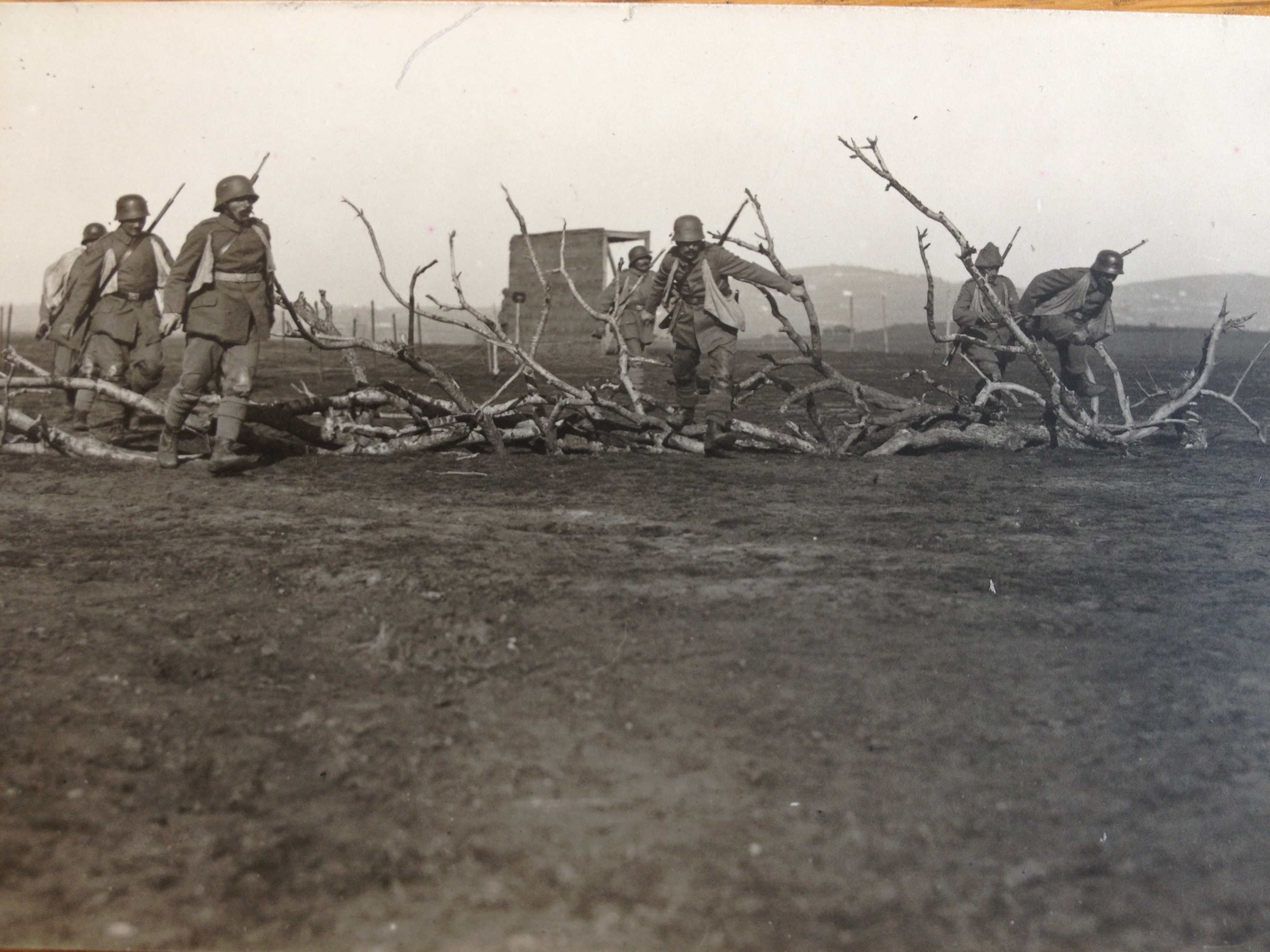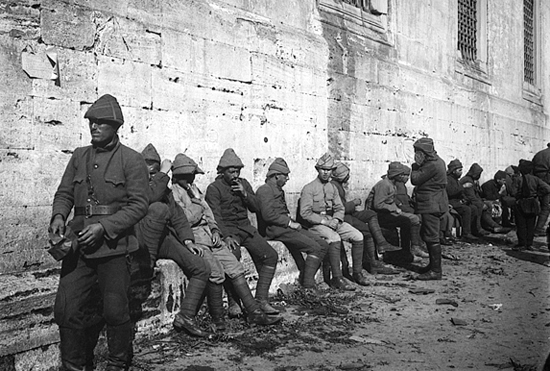
Portuguese soldiers in Africa during World War I wearing the newly introduced khaki 1900 pattern uniform
Khaki was used throughout the colonial world by most of the major powers, and in many ways the First World War was the first conflict where the parties fought with virtually the same colored uniforms. While khaki, as we noted in part I of this feature on The Original Camouflage, was introduced in India, other powers including France and Germany – as noted in previous posts – also opted for the dust-colored fabric. Other armies, including the Belgians, Portuguese, Spanish and Turks would don khaki colored uniforms.
It was during World War I that the Portuguese put to the test the uniforms introduced in 1900. A shortage of uniforms however led to the 1911 grey Metropolitan uniform being used side-by-side with those of khaki. Portuguese forces remained in khaki into the 1960s as it remained the color of the tropical dress uniform. In 1964 it finally gave way to the 2-G pattern jungle camouflage.

An early 20th century post card that shows the development and history of Portuguese uniforms including the adoption of khaki

A 1934 “Exército Ultramarino” (Overseas Army) jacket that was used in the Portuguese colonies (Author’s collection)
The Belgian Army in Europe did not adopt khaki until the spring of 1915, but it had been authorized for wear in the Belgian Congo in late 1915 – replacing the white uniforms of the Force Publique/Openbare Weermacht.
Even as late at the Battle of Tabora – in September of 1916 – some Belgian soldiers were still wearing the blue and white uniforms. At this point the European’s also wore blue coats and white trousers for daily use, but complete white on special occasions.
The Askari (colonial troops) also soon began to see their blue tunics replaced with those of khaki. This pattern of uniform would see several changes but khaki would remain the de facto color in the Belgian colonies until the 1950s.

A Belgian “Askari” uniform circa World War I in the collection of the Royal Museum for Central Africa
Khaki was also introduced into the Ottoman Army following the Young Turk Revolution of 1908-09, replacing the old dark blue uniform. For this the Ottoman’s – who were considered the “Sick Man of Europe” – can be seen as at least modernizing its military uniform in time for the coming war. This uniform proved to be practical for the campaigns in the Balkans, in the Middle East and at Gallipoli.

A World War I era Turkish officer’s uniform in the collection of the Askerî Müze (Istanbul Military Museum)

Turkish storm troopers at the end of World War I – note that these men are mostly wearing German supplied steel helmets, while the soldier on the right is wearing the traditional kabalak (photo courtesy of Vladan Lausevic)










